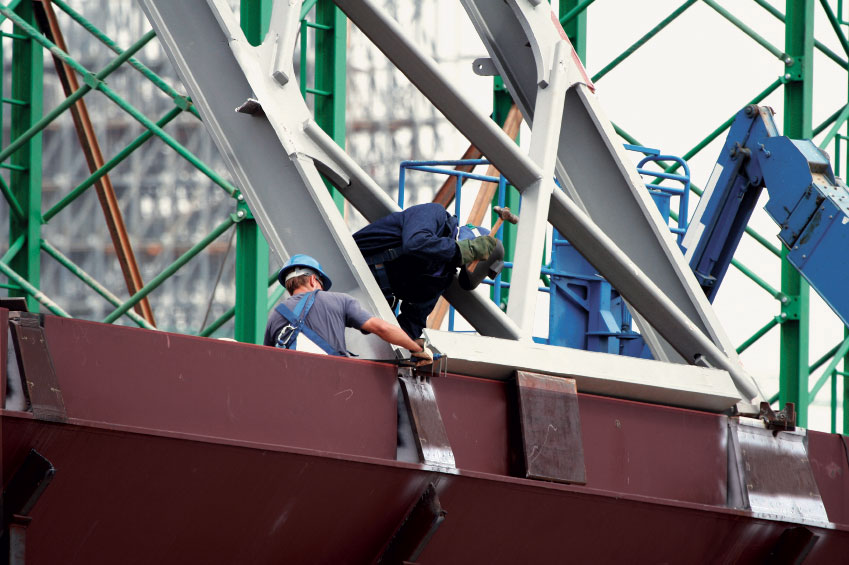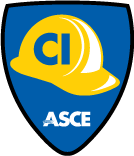By Ali Karakhan and John Gambatese

Summary of a paper published in Practice Periodical on Structural Design and Construction American Society of Civil Engineers (ASCE), Volume 23, Issue 2.
It is no secret that construction jobsites can be full of safety hazards. Workplace hazards, when combined with demanding tasks and impacts associated with organizational pressures, extreme work environments, personal issues, and external factors can produce unacceptable safety risk to field personnel that may lead to severe workplace injuries. Nobody wants to get injured, and companies do not want injured employees.
Not only do injuries cause physical harm to workers, they can cause psychological distress to workers, their families, and the entire community at work. Along with this potential harm, workplace injuries are associated with potential negative economic and noneconomic impacts on quality of work, work productivity, work schedule, project cost, stakeholder relations, and corporate reputation.
To effectively mitigate and control workplace safety risk, a comprehensive project risk-mitigation plan should be developed and implemented before workers are exposed to risk, prior to the start of work operations. Researchers at Oregon State University have recently investigated this topic in detail to identify the components of an effective risk mitigation plan (hazard identification, safety risk quantification, safety risk control, etc.) that construction organizations should implement in their work.
As a starting point, the researchers place special emphasis on delineating the difference between hazard and risk, and the transformation process a hazard undergoes when combined with other workplace conditions before emerging as a workplace safety risk. Hazard is not synonymous with risk, although a hazard is a major determinant of the magnitude of risk to which the workers are exposed. The safety outcome of an operation also depends on the potential for an injury incident to occur and the extent of worker exposure to the hazard.
It is important to remember the potential impact of internal, external, project-related and organizational-related factors on the magnitude of exposed safety risk. All of these factors can potentially increase the risk and lead to workplace injuries. A clear understanding of hazards, risk, and the types of potential impacting factors provides the foundation for developing an effective risk mitigation plan that minimizes the likelihood of workplace injuries. Those who develop a risk mitigation plan need to be knowledgeable about these issues.
Once an understanding of basic safety concepts is gained, the next step is to identify practical controls to mitigate the risk. A variety of controls may be selected, ranging from personal protective equipment (PPE) to elimination of the hazard altogether. The researchers give special attention to controls that target human behavior, commonly held as the primary cause of injury incidents.
Different types of behavioral approaches have been developed to promote workplace safety and motivate employees with respect to safety and quality performance. These approaches help facilitate employee engagement in the workplace and promote safe workplace conditions. One of these approaches, for example, is the use of incentive programs. Incentives can be effective in influencing worker behavior in the workplace. Incentive programs are "a formal scheme used to promote or encourage specific actions or behavior by a specific group of people during a defined period of time." These programs often include different types of rewards that employees can earn after achieving a certain outcome, demonstrating a specified positive behavior, and/or performing a particular activity that is of value to the company and the workforce altogether. Outcome-, behavioral-, and activity-based incentives are types of incentive programs implemented throughout the industry.
The researchers present a hypothetical example with multiple scenarios to illustrate the transformation process a hazard takes before emerging as a safety risk and the different approaches a company can implement to increase employee awareness of potential workplace hazards and safety risks. The example outlines three scenarios that illustrate the different approaches construction contractors can implement to mitigate workplace safety risk and explains how these approaches impact safety outcomes differently.
In the first scenario, the company decided to implement a low level of safety control and emphasized that the tasks should be completed before a specific deadline without providing directions and training on how to carry out the specified tasks safely and successfully. These circumstances led to poor risk management and a negative workplace culture that prioritized productivity over safety. Accordingly, the level of exposed safety risk was unacceptably high and, thus, the safety performance outcomes were undesirable.
In the second scenario, the level of risk control implemented by the company was as low as in the first scenario, but the level of safety maturity and competency within the company was relatively high. The company was aware that a substantial percentage of the potential risk was not mitigated and, therefore, implemented several behavioral and non-behavioral approaches to improve workplace conditions and safety culture. These approaches improved workplace conditions and increased safety awareness. All of these efforts alleviated a significant amount of the generated risk, leaving reasonably practicable risks that the workers could avoid, with moderate effort, during the work operations.
In the third scenario, the case was completely different, and the company was conservative and mature in many aspects. The safety plan was comprehensive and included different types of controls in the hierarchy of controls, both preventive and engineering. In addition, the company implemented a comprehensive safety incentive program that rewarded individuals and work groups for reporting safety violations and potential safety hazards. The different safety controls implemented led to the establishment of a rewarding work environment that minimized potential workplace risks and prioritized safety over other performance measures.
The results from the study are expected to provide valuable information to:
- Help industry practitioners develop an effective risk mitigation plan for construction.
- Increase field personnel's understanding of the transformation of a hazard into acceptable or unacceptable safety risk.
- Assist project and safety managers in implementing different types of behavioral approaches (e.g., incentive programs) to enhance workplace safety and work quality.
More information and access to the paper describing the study can be found in the ASCE library. The authors encourage others to read the full paper and other publications on hazard, risk, and risk mitigation, and welcome feedback and suggestions for further research on the topic. Increasing the safety education level in the construction industry will help improve the industry's safety performance.
Ali Karakhan is a PhD candidate in the School of Civil and Construction Engineering at Oregon State University (OSU). Mr. Karakhan worked as a faculty member and field engineer at the University of Baghdad before joining OSU to start his doctoral studies. Mr. Karakhan's area of research interests includes construction safety and risk management, workforce development in construction, quality management and lean construction, and decision‐making methods in construction. He is a member of the American Society of Civil Engineers (ASCE) and the Construction Institute Construction Safety Committee.
John Gambatese is a Professor in the School of Civil and Construction Engineering at Oregon State University. Dr. Gambatese's educational background includes Bachelor and Master of Science degrees in Civil Engineering from the University of California at Berkeley, and a PhD in Civil Engineering from the University of Washington. Dr. Gambatese teaches and conducts research in the broad area of construction engineering and management, and more specifically related to safety, prevention through design, risk and reward, innovation, and sustainable and lean practices. He is a licensed Professional Civil Engineer in California.


